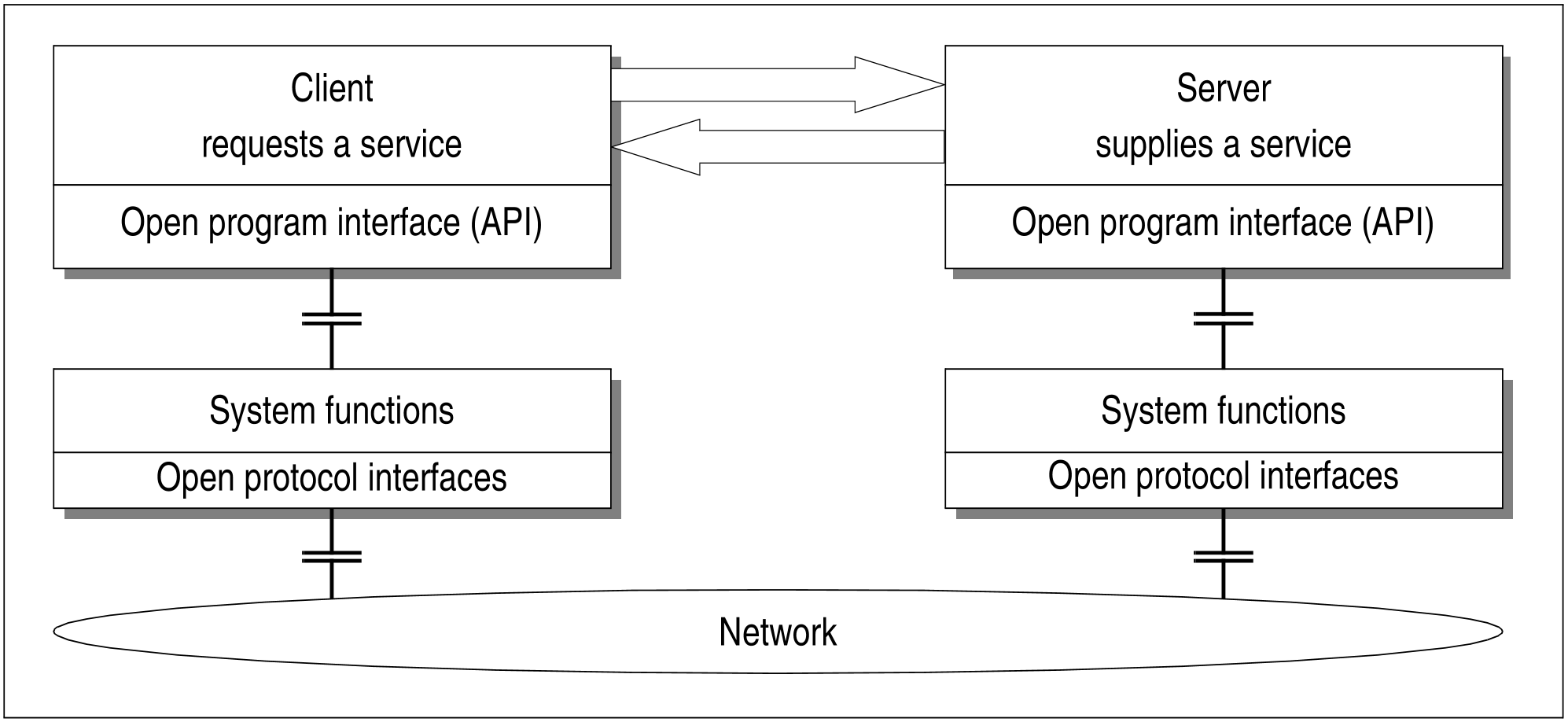Different computer worlds are integrated system-wide into client/server architectures. Decentralized, intelligent computers are linked with central mainframes, which makes distributed processing possible.
Within this homogeneous whole, the servers provide different services which are used by the clients. Server functions are mainly performed by mainframe and UNIX systems, while client functions are supplied mainly by PCs, workstations and UNIX systems. Client and server systems can be combined as desired.
Figure 2: Role distribution in a client/server architecture
In a flexible architecture, the same computer can be used as a client for some services and as a server for others. This allows the best possible use to be made of the strengths of different computers:
on PCs, standard applications run preferably under MS-Windows on PCs, especially in the areas of word processing, spreadsheet calculation and business graphics
workstations are better suited for applications which have a high graphics performance, such as CAD (Computer-Aided Design)
with their immense computer capacity, the use of large bulk storage areas, the outstanding security and the high degree of automation of the administration, BS2000 mainframes are especially suited as enterprise-wide servers.
BS2000 servers work in perfect cooperation with other servers in the network, irrespective of whether the server is a BS2000 or UNIX system. In this way for example, departmental data can be administered by different UNIX systems, while a central BS2000 server with high-performance peripherals is responsible for enterprise-wide data.
For the user, client/server architectures offer several advantages:
The flexibility of procedural organization is increased.
Information is more easily and more widely available.
An optimum distribution of tasks among the different systems is achieved.
The computer network can be adapted exactly to the size of the company using it.

